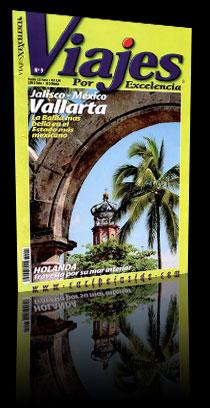Cuisine
Fishing is also a major economic activity, with several key points such as Barra de Navidad, Puerto Vallarta and the Chapala Lagoon. Local restaurants serve the best seafood money can buy in town. The selection includes huachinangos, red snappers, sharks, mojarras and shrimps. In addition to this, the streets of Puerto Vallarta are jam-packed with small joints and outlets selling all kind of treats.
But from all the ingredients and dishes available here, there's one element that's perhaps a living part of Mexico's historic and cultural life. The origin of corn harks back to the pre-Hispanic era of the maize civilization. This fact has prompted international cuisine authorities in Paris to propose Mexican food to join the list of Intangible Heritage of Mankind on the basis of steadiness and originality.
Today, corn is being ground in any community of Tlaxcala and Oaxaca, whose residents resort to manmade stone mills and make tortillas in the same fashion their ancestors have made them for centuries. After Spanish conquistadors arrived, new ingredients were added. Mexican canopies are the highest examples of what Aztec cuisine is actually all about, and corn is a key player in each and every case. Tacos, quesadillas, enchiladas, sopes, gorditas... you name it!
Both in Puerto Vallarta and Jalisco, variety is the name of the game. In either place, you'll have the chance of gobbling up the most genuine Mexican food of the entire region: pozole tepatio, lamb birria, sweet jericalla (similar to custard) and tequila. Nonetheless, patrons have other choices as well. French, Italian, Oriental, Argentine and Spanish food speak volumes of that variety I mentioned above.
Puerto Vallarta offers an endless assortment of opportunities for all moods, tastes, companies and days of the week, ranging from sophistication to casual. There's no way you can possibly know Mexico if you don't taste its food, an indispensable part of the Aztec nation's feelings and way of approaching the universe.






















































